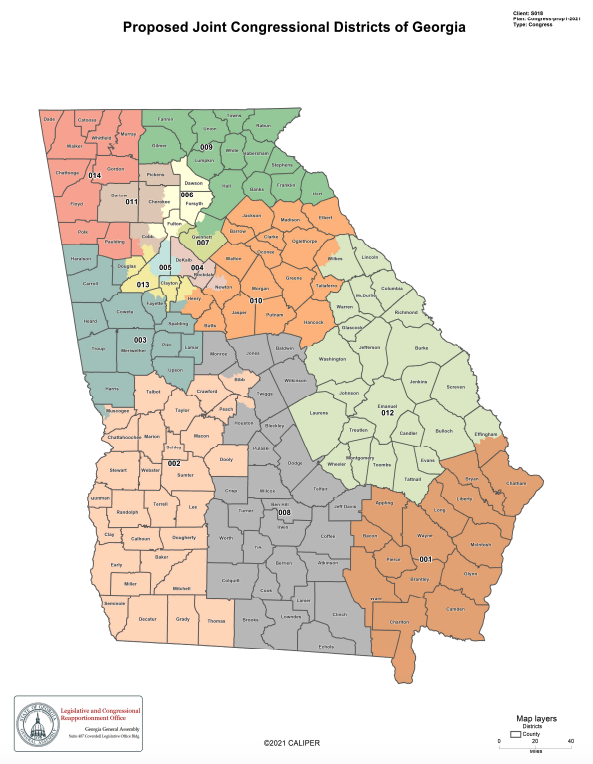
ATLANTA – Georgia lawmakers took another step Thursday toward determining the state’s political balance of power for the next decade, as a state Senate committee approved a Republican-drawn congressional map.
Voting 9-5 along party lines, the Senate Reapportionment and Redistricting Committee approved a map aimed at gaining a seat in Georgia’s congressional delegation by making one metro Atlanta district more friendly to the GOP while leaving another solidly in Democratic hands. Georgia’s U.S. House delegation currently consists of eight Republicans and six Democrats.
The map is now headed toward final approval on the floor of the GOP-controlled Senate. The state House of Representatives is still holding hearings on the map.
The General Assembly has been meeting in special session for two weeks as lawmakers redraw legislative and congressional boundaries to accommodate changes in population reflected in the 2020 U.S. Census.
The map approved Thursday adds more white voters to the 6th Congressional District by extending it north through all of Forsyth and Dawson counties and eastern Cherokee County. As a result, the 6th District’s white voting-age population would increase to 66.63%.
That makes the reelection prospects of U.S. Rep. Lucy McBath, D-Marietta, problematic at best. McBath won the seat representing East Cobb, North Fulton and North DeKalb counties in 2018 after it had been in Republican hands for decades.
Under the new map, the 7th Congressional District would take in most of Gwinnett County and a portion of North Fulton, increasing its concentration of minority voters and, thus, making it safer for freshman Rep. Carolyn Bourdeaux, D-Lawrenceville.
The Republican map also makes the 2nd Congressional District in Southwest Georgia held by Rep. Sanford Bishop, D-Albany, more competitive by slightly lowering its Black voting-age population (VAP) and raising its white VAP.
Before approving the GOP map, the committee rejected — again, along party lines — a Democrat-authored map introduced by Senate Minority Leader Gloria Butler, D-Stone Mountain.
The Democratic map made little change to McBath’s district while keeping Bourdeaux’s majority-minority district wholly inside Gwinnett County.
“[The 6th District] will continue to be one of the most competitive in the state under our map,” Butler said.
The Democrats also sought to create an additional majority-minority district by shifting the 10th Congressional District from east Georgia to the western portions of metro Atlanta, reflecting the metro region’s rapid growth during the last decade.
Sen. Michael Rhett, D-Marietta, complained that the Republican map moves the Northwest Georgia district of controversial Rep. Marjorie Taylor Greene, R-Rome, south into some of the most heavily Black areas of Cobb County.
“That’s not sitting well with my constituents,” he said.
Sen. John Kennedy, R-Macon, the committee’s chairman, said the change was made to meet the legal requirements that all congressional districts be virtually even in population. He said the map has to be viewed as a whole, with populations shifts in each district affecting others.
“None of this is done in a vacuum,” he said.
Late last week and early this week, lawmakers passed new state House and Senate maps amid protests from Democrats that the maps were drawn in secret and without enough time for public comment.
Legislative Democrats and civil and voting rights advocates criticized the Republican congressional map at House and Senate committee hearings Wednesday as ignoring communities of interest in favor of giving the GOP a partisan advantage.
This story is available through a news partnership with Capitol Beat News Service, a project of the Georgia Press Educational Foundation.